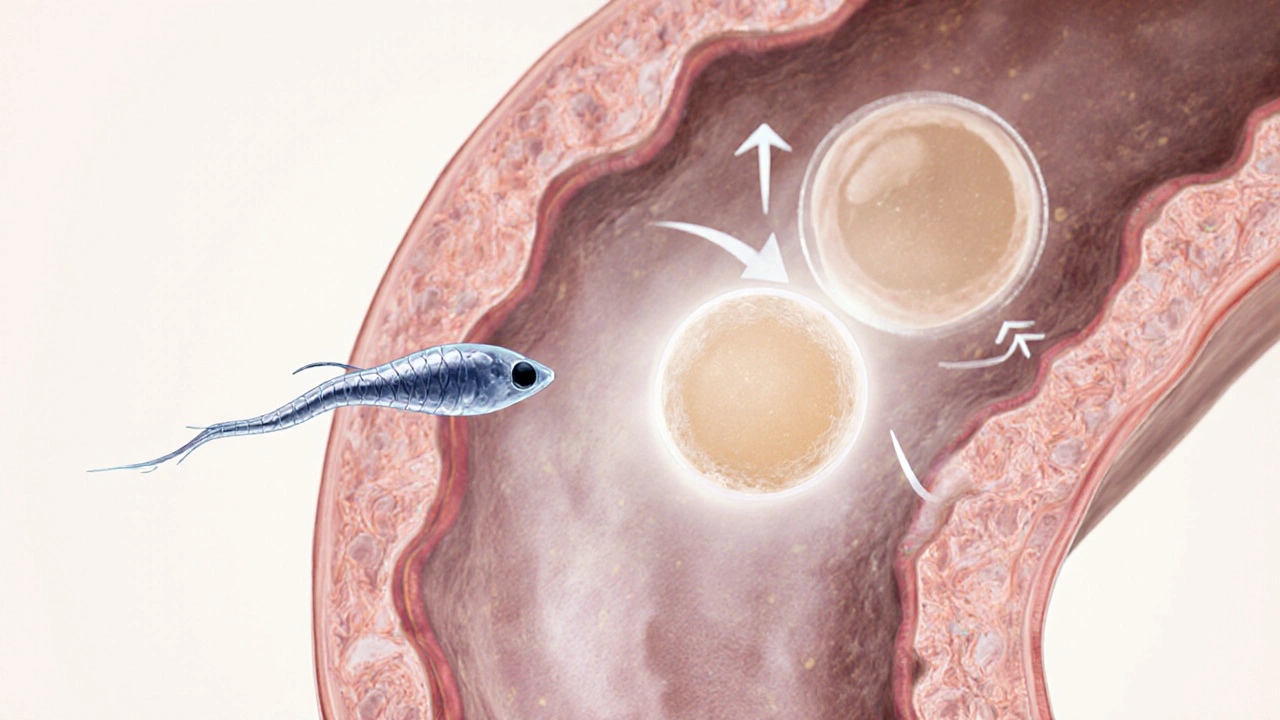Zjistěte, jak rozpoznat první známky oplodnění - od změn bazální tělesné teploty po první těhotenský test. Praktické tipy a odpovědi na nejčastější otázky.
Symptomy otěhotnění – co si všimnout a jak je rozpoznat
When working with symptomy otěhotnění, jde o řadu fyzických a hormonálních změn, které mohou naznačovat, že se ve vašem těle vyvíjí embryo. Also known as příznaky těhotenství, it helps women understand what their bodies signal during the fertile window. Recognizing these signals early can save anxiety and guide you to the right medical advice.
Co je důležité sledovat během cyklu
One of the first clues often appears in the cervikální hlen, který mění konzistenci a množství pod vlivem hormonů. Around ovulation the mucus becomes průhledný a pružný – připomíná čerstvé vaječné bílé. This texture is ideal for sperm, so noticing it signals that ovulace is nearby. Ovulace, je moment, kdy vajíčko opouští vaječník a může být oplodněno also brings subtle body temperature rise and occasional mild abdominal pain, known as mittelschmerz. When you combine observations of cervical mucus with basal body temperature trends, you get a reliable picture of your fertile days, which directly influences the appearance of other pregnancy symptoms.
Another concrete indicator is the result of a těhotenský test, který detekuje hormon hCG v moči. A positive line usually appears 10‑14 dní po oplodnění, but some ultrasensitive tests can show a faint line earlier. The test’s sensitivity defines how early you can spot the hormonal surge, turning vague symptoms into a confirmed sign. Even before the test, many women notice changes in výtok – it may become lepkavý, bílý nebo růžový, a sometimes a faint metallic taste appears, both caused by rising estrogen levels.
Beyond mucus and tests, other symptomy otěhotnění include breast tenderness, mild fatigue, and increased urination. These are driven by progesteron, which prepares the uterine lining for implantation. Some women feel heightened sense of smell or mood swings; these are normal reflections of hormonal flux. By mapping each symptom to its hormonal source – estrogen, progesteron, or hCG – you create a personal health map that tells you where you are in the reproductive timeline.
In the collection below you’ll find detail‑rich articles that dive deeper into each of these topics: how to track cervical mucus correctly, which těhotenský test offers the highest citlivost, ways to interpret changes in výtok, and practical tips for supporting early pregnancy. Use this guide as a starting point, then explore the posts to get answers to specific questions and actionable advice for your journey.

